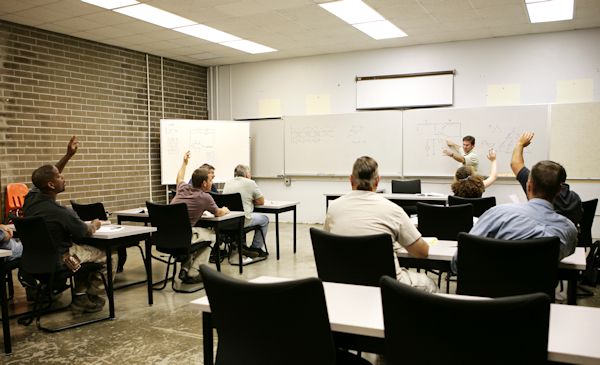The ABCs of Room Arrangements
Your training room can have a large impact on the success of the training session.

A training room must be arranged to support the learning objectives as well as the number of students participating. The typical safety trainer will not be able to pick and choose the rooms they'll be using for training. You get what you get. You must make the best of it in terms of learning environment.
Accessible
Make sure the room is accessible to everyone including those with disabilities.
Acoustics
If you have a large room with poor acoustics, students may not be able to hear or understand what you're saying. Poor acoustics can dull the sound or cause echoes, especially in large "halls" with wood floors and walls. You may have to use a microphone to make sure everyone can hear what you're saying.
Convenience
The training room should be nearby to restrooms, telephones, snack area, lunchroom, etc. It's important to have those areas convenient to the training room so that when students take breaks, they don't have to spend a lot of time getting to and from break areas.
Climate Control
Be careful to set the temperature in the training room just a little bit cool. If it's too warm, you'll have students falling asleep. If it's too cold, students will let you know. You're not going to please everyone. It's a good idea to know where the thermostat is located and how to operate it. If sunlight is entering through windows, make sure it's not causing discomfort to students.
Distractions
The training room should have windows, but make sure there isn't a lot of activity going on outside to distract students. The more you're able to keep distractions and noise, both external (talking) or internal (noisy equipment), out of the room, the better. Never train in a room with a telephone without disabling the ringer somehow.
Knowledge Check Choose the best answer for the question.
1-3. A training room located near restrooms, rest areas, and snack areas fulfill which criteria below?
You forgot to answer the question!
